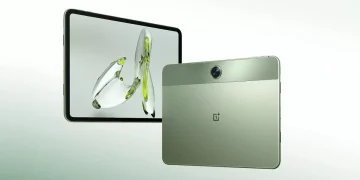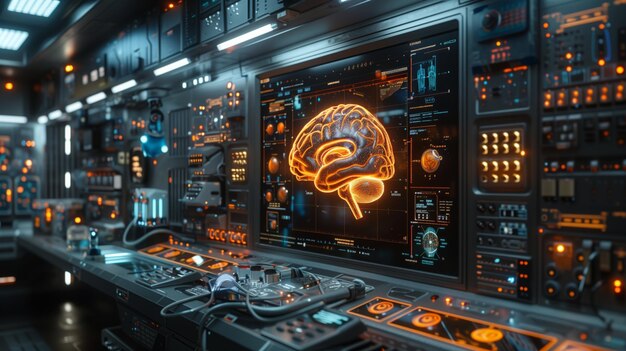Brain-computer interfaces (BCIs) have been a staple of science fiction for decades, with depictions of mind-reading and brain-controlled devices appearing in countless films, books, and TV shows. However, the technology has made significant strides in recent years, with many experts predicting that BCIs will become a reality in the near future. But is this hype or a genuine breakthrough?
Science Fiction or Reality?
BCIs have been a topic of interest for many years for discussion and it creates an interesting controversy over the topic, with researchers and scientists working to develop the technology and few people not believing it because thetheory can be untrue. In the 1990s, the first BCIs were developed, allowing people to control devices with their thoughts. However, these early devices were limited in their capabilities and were not widely adopted.
In recent years, there have been significant advancements in BCI technology, with the development of more sophisticated devices and algorithms. For example, the BrainGate system, developed by researchers at Brown University and the VA, allows people with paralysis to control devices with their thoughts. This technology uses a tiny sensor implanted in the motor cortex to detect the signal, which picks up brain signals and sends them to an external decoder that turns them into commands for electronic or robotic devices.
The differences between science fiction and fiction are:
- Science fiction is a subgenre of fiction that is based on scientific principles, theories, and potential future advancements that are mostly driven or proved if an assumption. It explores “what if” scenarios that are grounded in science, even if they are not currently possible.
- Fiction, on the other hand, refers to stories that are imaginary and not based on real events or science totally for entertainment but it does involve an imagination where the changes of fiction being reality occur that if it’s clearly impossible how a man is able to picture it. This includes genres like fantasy, which involve elements that are impossible in the real world, such as magic.
- The search results indicate that while science fiction and fantasy/fiction overlap in some ways (both create imaginary worlds), the key distinction is that science fiction has a basis in science and technology, while fiction/fantasy does not.
- Some works may blend elements of science fiction and fantasy, creating a “science fantasy” genre. But the core difference is that science fiction is rooted in scientific plausibility, even if the specific scenarios are fictional.
- The search results suggest that the term “sci-fi” is often used more casually or colloquially than the formal term “science fiction”, and some authors/experts may view “sci-fi” as diminishing the serious, scientific nature of the genre.
In summary, science fiction is a type of fiction that is grounded in science and technology, while fiction/fantasy is purely imaginary and not based on real-world scientific principles. The search results indicate this is the key distinction between the two in this context.
Examples of BCIs in Science Fiction
BCIs have appeared in numerous science fiction films and TV shows, often depicting mind-reading and brain-controlled devices. For example:
- The Matrix (1999): In this iconic film, the main character, Neo, is able to control machines with his mind using a BCI-like device.
- Star Trek: The Next Generation (1987-1994): In this TV show, the character Data, an android, is able to read minds using a BCI-like device.
- The Terminator (1984): In this film, the Terminator, a cyborg, is able to read minds using a BCI-like device.
Examples of BCIs in Reality
While BCIs are still in the early stages of development, there are several examples of the technology being used in real-world applications:
- BrainGate: As mentioned earlier, the BrainGate system allows people with paralysis to control devices with their thoughts.
- Neuralink: Elon Musk’s Neuralink is a company that is developing a BCI-like device that can read brain signals and translate them into commands for electronic or robotic devices.
- EEG-based BCIs: EEG-based BCIs are non-invasive devices that use electroencephalography to read brain signals and translate them into commands for electronic or robotic devices.
The ethical concerns surrounding brain-computer interfaces (BCIs) are numerous and multifaceted. Here are some of the key ethical issues:
- Privacy and Security: BCIs have the potential to reveal a wide range of personal information, including thoughts, emotions, and mental states. This raises concerns about privacy and security, as individuals may not be able to keep their thoughts private.
- Autonomy and Agency: BCIs could potentially be used to manipulate or control individuals’ thoughts and actions, raising concerns about autonomy and agency.
- Ethics of Use: There are ethical concerns about how BCIs should be used, particularly in situations where they are used to extend or enhance human abilities. For example, should individuals who use BCIs to extend their memory or learning abilities be treated differently than those who do not?
- Fairness and Equity: There are concerns about fairness and equity, as BCIs could potentially benefit some individuals more than others. For example, those who have access to BCIs may have an unfair advantage over those who do not.
- Ethics of Development: There are ethical concerns about the development of BCIs, particularly in terms of the potential for abuse or misuse. For example, BCIs could potentially be used to manipulate or control individuals’ thoughts and actions.
- Ethics of Deployment: There are ethical concerns about the deployment of BCIs, particularly in terms of the potential for unintended consequences. For example, BCIs could potentially be used to manipulate or control individuals’ thoughts and actions in ways that are not intended.
Based on the search results provided, here are the key points regarding the question “Is science fiction real or fake, and examples of sci-fi becoming reality or hype train”:
Science fiction is a genre of fiction that deals with imaginative and futuristic concepts, often involving advanced science and technology. It is considered a form of “fake” or imaginary literature, as the stories and events depicted are not real.
However, science fiction can be inspired by real-life scientific and technological developments, and some elements of science fiction have indeed become reality over time. This is known as “sci-fi becoming reality”.
Examples of science fiction elements that have become reality include:
- Communicators and video conferencing from Star Trek
- Self-driving cars from Knight Rider and Minority Report
- Virtual reality therapy from The Matrix
- Wireless earbuds from Star Trek
- Tablets and smartphones from 2001: A Space Odyssey
- Underwater breathing devices from 2001: A Space Odyssey
- Prosthetics and bionic limbs from Mortal Kombat and RoboCop
- Space tourism from Star Trek
At the same time, some science fiction concepts remain in the realm of “hype train” – ideas that have not yet been realized or may never become reality. The line between sci-fi becoming reality and the hype train is often blurred and subjective.
Scholars and critics have debated the literary merit of science fiction, with some considering it a legitimate form of literature, while others view it as a genre fiction with limited artistic value.
In summary, while science fiction is a fictional genre, it can be inspired by and influence real-world scientific and technological developments. The extent to which science fiction becomes reality or remains in the realm of hype is an ongoing discussion.
Conclusion
While BCIs are nonetheless inside the early tiers of improvement, the technology has made considerable strides in recentBrain-pc interfaces (BCIs) have been a staple of technological know-how fiction for many years, with depictions of thoughts-studying and mind-controlled devices performing in countless films, books, and TV shows. However, the generation has made considerable strides in current years, with many specialists predicting that BCIs will become a reality inside the close to destiny. But is that this hype or a genuine breakthrough? years. While it is hard to predict exactly whilst BCIs will become a reality, it’s miles clean that technology has the capability to revolutionize the manner we interact with the world.























































